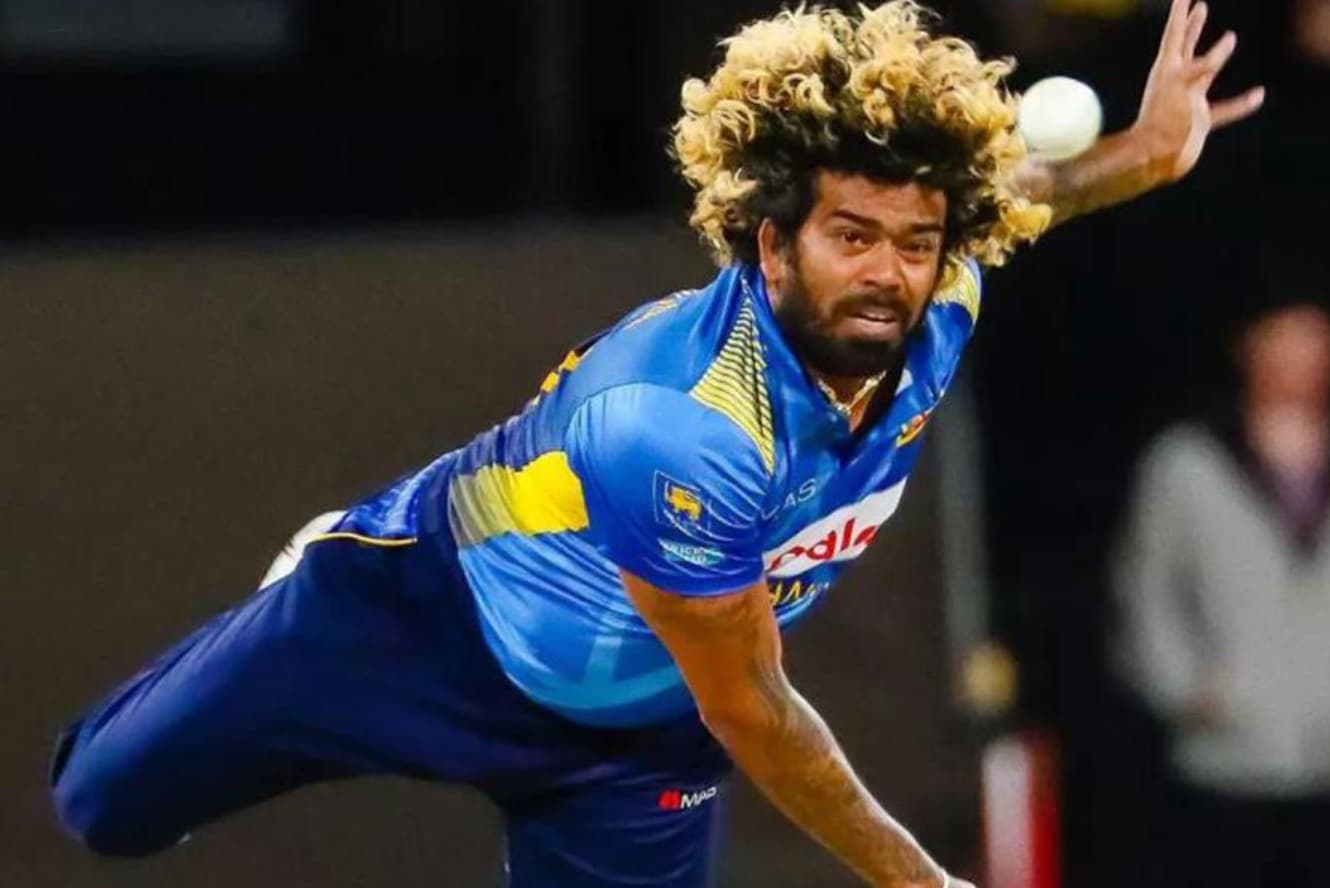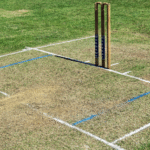Cricket is a sport filled with magical moments. From breathtaking catches to match-winning sixes, the game never stops surprising us.
But among all these incredible feats, one achievement stands out for its sheer rarity and difficulty—the double hat-trick.
Every cricket fan knows what a hat-trick is. A bowler takes three wickets in three consecutive balls, and the crowd goes wild. It’s already hard enough to achieve.
But what if a bowler takes it one step further? What if they dismiss four batters in four consecutive deliveries?
That’s exactly what a double hat-trick is. And it’s so rare that only six bowlers in cricket history have done it.
How Many Wickets Constitute a Double Hat-Trick?

In this article, we’ll explore everything about the double hat-trick shared by Sports Live Pro. How many wickets does it need?
Who has achieved it? And why is it considered one of cricket’s greatest bowling achievements?
Let’s find out.
What is a Double Hat-Trick?
A double hat-trick happens when a bowler takes four wickets in four consecutive balls.
It’s simple in definition but incredibly difficult in execution.
How is it different from a regular hat-trick?
A regular hat-trick requires three wickets in three consecutive deliveries. That’s already a massive achievement.
But a double hat-trick adds one more wicket to that sequence. That single extra dismissal makes it exponentially harder.
Why? Because the bowler must maintain perfect control, focus, and execution for one more delivery. Plus, the pressure builds with each wicket.
Breaking down the numbers
- Hat-trick = 3 wickets in 3 balls
- Double hat-trick = 4 wickets in 4 balls
- Triple hat-trick (theoretical) = 6 wickets in 6 balls (hasn’t happened yet)
The double hat-trick sits right between achievable and nearly impossible. That’s what makes it so special.
How Does a Double Hat-Trick Happen?
Taking four consecutive wickets requires everything to go right for the bowler.
The sequence matters
The four wickets must come in four consecutive legal deliveries. This means:
- No-balls and wides don’t count
- The wickets can happen in the same over or across two overs
- In some cases, they can even span across two innings (though this is extremely rare)
What does the bowler need?
- Perfect line and length – Every ball must hit the right spot
- Mental strength – The pressure increases with each wicket
- Smart variations – Yorkers, bouncers, slower balls—whatever works
- A bit of luck – Sometimes batters make mistakes; sometimes edges find fielders
Real-world examples
- Lasith Malinga (2007 vs South Africa): He bowled four consecutive yorkers in the death overs. Each one was unplayable. Shaun Pollock, Andrew Hall, Jacques Kallis, and Makhaya Ntini fell one after another.
- Rashid Khan (2019 vs Ireland): The Afghan spinner used his googly and leg-spin variations to deceive four Irish batters in a row.
These moments show that a double hat-trick isn’t just about luck. It’s about skill, planning, and nerves of steel.
The Rare Club of Double Hat-Trick Bowlers
Only six bowlers in international cricket have achieved this incredible feat.
Here’s the complete list:
| Player | Country | Year | Opponent | Format | Wickets Taken in Sequence |
|---|---|---|---|---|---|
| Lasith Malinga | Sri Lanka | 2007 | South Africa | ODI | Pollock, Hall, Kallis, Ntini |
| Lasith Malinga | Sri Lanka | 2019 | New Zealand | T20I | Rutherford, Munro, Taylor, Seifert |
| Rashid Khan | Afghanistan | 2019 | Ireland | T20I | O’Brien, Dockrell, Getkate, Singh |
| Curtis Campher | Ireland | 2021 | Netherlands | T20 WC | Ackermann, ten Doeschate, Edwards, van der Merwe |
| Jason Holder | West Indies | 2022 | England | T20I | Jordan, Billings, Rashid, Mahmood |
| Waseem Yaqoob | Lesotho | 2024 | Mali | T20 Qualifier | Nimaga, Berthe, Malle, Konate |
Notice something? Five out of six double hat-tricks happened in T20 cricket. That’s because T20 games are aggressive, and batters take more risks.
Lasith Malinga – The Pioneer of Double Hat-Trick
Lasith Malinga is a legend for many reasons. But his double hat-tricks make him truly special.
The 2007 World Cup masterpiece
During the 2007 ODI World Cup, Sri Lanka faced South Africa. South Africa needed just a few runs to win.
Malinga came in to bowl the 45th over. What happened next was pure magic.
He dismissed Shaun Pollock with a yorker. Then Andrew Hall couldn’t handle another perfect yorker.
Jacques Kallis, one of the greatest batters ever, also fell to a yorker.
And finally, Makhaya Ntini was bowled by yet another toe-crusher.
Four wickets in four balls. Four consecutive yorkers. Unbelievable.
Though Sri Lanka eventually lost the match, Malinga’s spell became legendary.
The 2019 repeat
Malinga did it again in 2019 against New Zealand in a T20I.
This time, he dismissed Hamish Rutherford, Colin Munro, Ross Taylor, and Tim Seifert in four consecutive deliveries.
Malinga proved that his 2007 feat wasn’t a fluke. He’s the only bowler with two international double hat-tricks.
His nickname? The Yorker King. And for good reason.
Other Legendary Double Hat-Trick Achievers
Rashid Khan (Afghanistan) – 2019 vs Ireland
Rashid Khan is one of the world’s best spinners. In 2019, he showed why.
Against Ireland in a T20I, Rashid took four wickets in four balls. His victims were Kevin O’Brien, George Dockrell, Shane Getkate, and Simi Singh.
He finished with figures of 5/27, destroying Ireland’s batting lineup.
Rashid became the first spinner to achieve a double hat-trick in international cricket.
Curtis Campher (Ireland) – 2021 T20 World Cup
Curtis Campher shocked the cricket world during the 2021 T20 World Cup.
Playing against the Netherlands, Campher took four wickets in four balls. He dismissed Colin Ackermann, Ryan ten Doeschate, Scott Edwards, and Roelof van der Merwe.
What made it special? It happened in a World Cup match. The pressure was immense, but Campher delivered.
Ireland won the match comfortably, thanks to Campher’s incredible spell.
Jason Holder (West Indies) – 2022 vs England
Jason Holder is known for his calm demeanor. But in 2022, he produced a moment of pure aggression.
Against England in a T20I, Holder bowled the final over. England needed a few runs to win.
But Holder had other plans. He dismissed Chris Jordan, Sam Billings, Adil Rashid, and Saqib Mahmood in four consecutive balls.
West Indies won the match by one run. Holder’s double hat-trick became a match-winning performance.
Waseem Yaqoob (Lesotho) – 2024 Africa Qualifiers
Waseem Yaqoob made history in 2024 during the ICC World Cup Africa Qualifiers.
Playing for Lesotho against Mali, Yaqoob bowled a devastating spell. He took six wickets for just 18 runs in four overs.
Four of those wickets came in four consecutive balls—Amara Nimaga, Dramane Berthe, Mahamadou Malle, and Yacouba Konate.
Mali was bowled out for just 36 runs, and Lesotho won by 112 runs.
Yaqoob’s performance showed that the double hat-trick isn’t just for big cricket nations. Passion and skill can create magic anywhere.
Hernan Fennell (Argentina) – 2024 Americas Qualifiers
Hernan Fennell became the sixth and most recent bowler to achieve a double hat-trick.
During the 2024 ICC Men’s T20 World Cup Americas Qualifier, Fennell dismissed four consecutive Cayman Islands batters.
His spell helped Argentina secure a crucial victory and added his name to cricket’s history books.
Why Is a Double Hat-Trick So Rare?
Only six bowlers have achieved it. That tells you how difficult it is.
Here’s why:
- 1. Perfect execution required
Every ball must be spot-on. One small mistake, and the sequence breaks.
- 2. Immense mental pressure
After taking two or three wickets in a row, the bowler knows they’re close to history. That pressure can affect performance.
- 3. Luck plays a role
Sometimes a batter edges the ball, and it goes to a fielder. Sometimes it goes beyond a boundary. The margin between success and failure is tiny.
- 4. Match conditions must align
The pitch, weather, and match situation all matter. Not every match provides the right conditions for a double hat-trick.
- 5. Limited opportunities
Most bowlers don’t even get to bowl four consecutive deliveries in high-pressure situations. The opportunity itself is rare.
All these factors combined make the double hat-trick one of cricket’s rarest achievements.
Significance and Impact of a Double Hat-Trick
When a bowler takes four consecutive wickets, everything changes.
- 1. Match momentum shifts instantly
A team cruising toward victory can suddenly collapse. The double hat-trick swings the game.
- 2. Boosts team morale
Teammates celebrate, fans go crazy, and the bowler becomes an instant hero.
- 3. Global recognition
Bowlers who achieve this feat are remembered forever. Malinga, Rashid, and Campher—their names are etched in cricket history.
- 4. Match-winning performances
Jason Holder’s double hat-trick won the match for West Indies. Waseem Yaqoob’s spell destroyed Mali. These moments decide games.
The double hat-trick isn’t just a personal milestone. It’s a team-changing, match-winning moment.
Double Hat-Trick in Modern Cricket
Cricket is evolving. T20 leagues and shorter formats are creating new opportunities.
- More T20 cricket = More chances
Formats like T20, The Hundred, and T10 encourage aggressive batting. Batters take risks, which increases the chances of quick wickets.
- Data-driven bowling strategies
Modern bowlers use data analytics to plan their deliveries. They know batters’ weaknesses and bowl accordingly.
But batters also study bowlers. So even with better planning, executing a double hat-trick remains incredibly hard.
- Still one of the rarest feats
Despite more cricket being played, only six bowlers have achieved it. That shows how special it is.
As cricket continues to grow, we might see more double hat-tricks. But they’ll always remain one of the sport’s most thrilling milestones.
FAQs
- What is a Double Hat-Trick in Cricket?
A double hat-trick is when a bowler takes four wickets in four consecutive deliveries. It’s an extension of a regular hat-trick, which involves three wickets in three balls.
- Who was the first bowler to take a Double Hat-Trick?
Lasith Malinga from Sri Lanka was the first bowler to achieve a double hat-trick in international cricket. He did it in 2007 against South Africa during the ODI World Cup.
- How many bowlers have taken a Double Hat-Trick in international cricket?
Only six bowlers have achieved this rare milestone: Lasith Malinga (twice), Rashid Khan, Curtis Campher, Jason Holder, Waseem Yaqoob, and Hernan Fennell.
- Can a Double Hat-Trick happen across two overs?
Yes, absolutely. As long as the four wickets are taken in four consecutive legal deliveries, it counts as a double hat-trick, even if they span across two overs.
- Is there a Triple Hat-Trick in cricket?
Technically, yes—a triple hat-trick would mean six wickets in six consecutive balls. However, this has never happened in international cricket and remains a theoretical achievement.
Conclusion:
So, how many wickets constitute a double hat-trick? The answer is simple: four wickets in four consecutive balls.
But achieving it? That’s anything but simple.
Only six bowlers in cricket history have done it. Lasith Malinga, Rashid Khan, Curtis Campher, Jason Holder, Waseem Yaqoob, and Hernan Fennell.
Each of them showed exceptional skill, mental strength, and a bit of luck.
The double hat-trick symbolizes everything great about cricket—discipline, precision, passion, and the ability to create magic in the most pressure-filled moments.
It’s rare. It’s special. And it will always be one of cricket’s greatest achievements.








